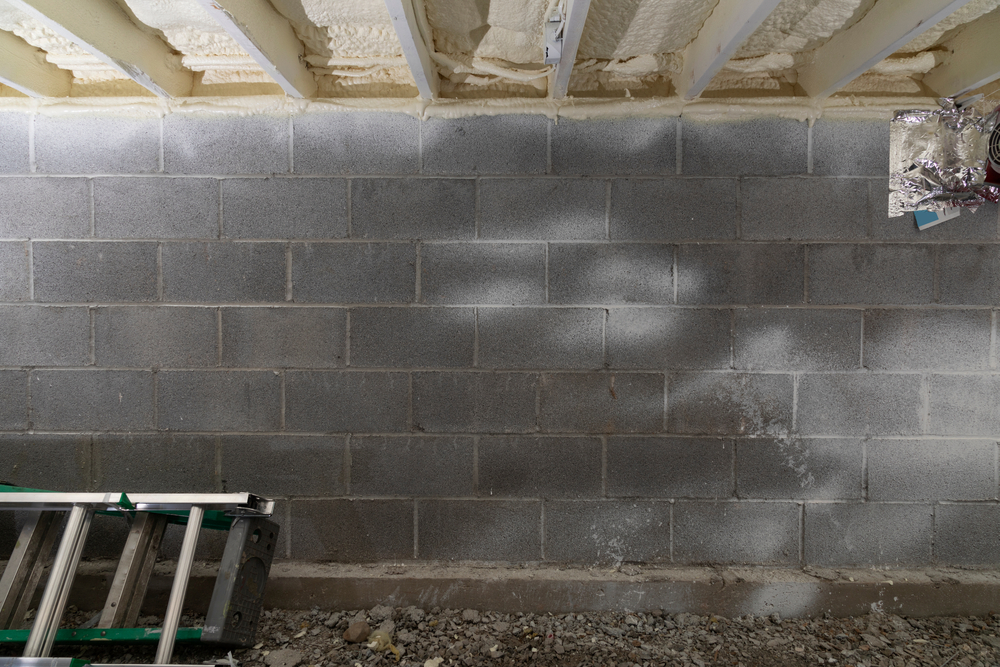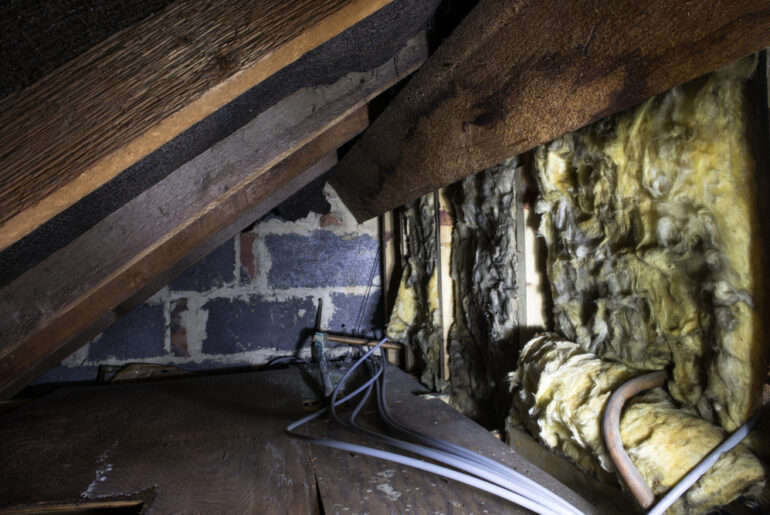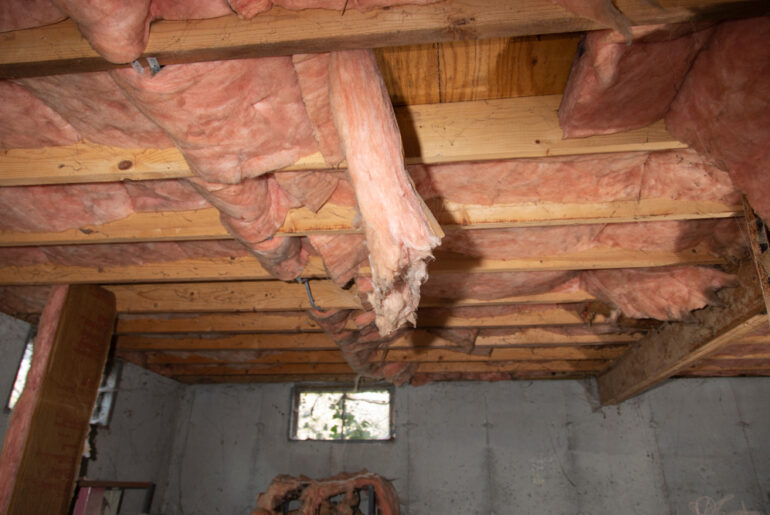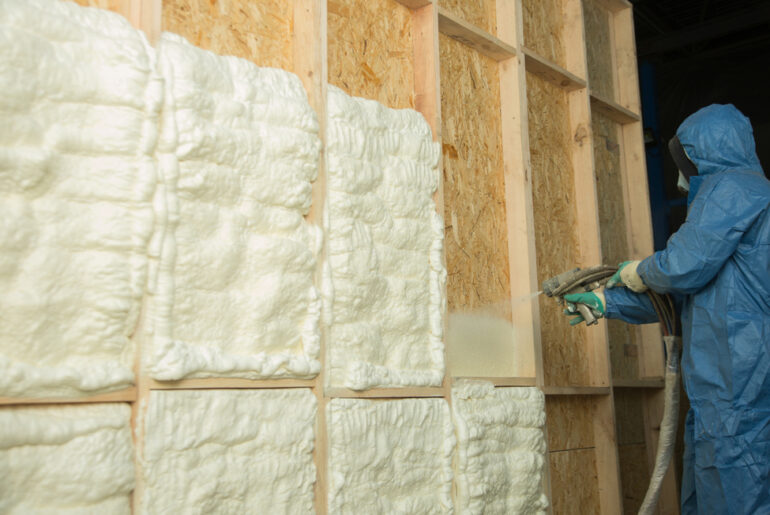Enhancing the utility of any part of a home has clear advantages, and conditioning the crawl space has many positive benefits when it comes to indoor air quality and building durability.
Fitting a vapor barrier to ensure the crawl space stays dry is not difficult, and it makes it easy to access for inspection and maintenance. Designed to create airflow, its job is to keep a floor structure dry.
There are a number of options in play. From a simple clean-up to a full remodel, our no-nonsense look at what you may need will help simplify the process.
Here’s everything you need to know about conditioning a crawl space.
What Does Conditioning a Crawl Space Mean?
Conditioning a crawl space is basically taking control of the humidity levels beneath a house. Water issues are the number one problem, making a perfect environment for mold to grow, and timber-rotting fungi to thrive.
Whether the problem is water ingress from improperly graded garden beds, poor drainage, or condensation, conditioning can make maintenance much simpler.
Why is Conditioning Important?
The crawl space can often be overlooked as it’s not as big as a basement, even though it often shares similar functions. A house is the single biggest investment most Americans will make in their lifetimes, so it makes sense to look after it.
How to Prepare Crawlspace For Conditioning
- Check for water on the ground. Poor grading, or failed drainage can lead to the build-up of moisture in the crawl space. It should be rectified as soon as possible as standing water could cause long-term damage.
- If there is evidence of water in the crawl space then the next thing to check is whether mold, or worse, rot, has started to attack the floor joists or colonize any damaged HVAC ducts. There are products that can deal with mold and rot effectively, but not unless damp issues have been resolved.
- Poorly insulated ductwork and blocked external wall vents can contribute to condensation build-up, which is equally bad for structural durability.
- Grading sidewalks, making sure garden beds and patios slope away from the house, extending downspouts and ensuring gutters are cleared regularly, these are simple fixes that can help a crawl space stay dry.
There Are Clear Advantages to Conditioning a Crawl Space
- Up to 40% of the air in the main living space of a home has already circulated through the crawl space. It means that mold spores, dust, and other contaminants are present in every room.
- Conditioning a crawl space can prevent moisture build-up, whether from seepage through the ground or condensation build-up. A dry crawl space means less opportunity for mold and rot to become a problem.
- An unconditioned crawl space can be its own ecosystem of spiders, flies, ants, and even termites and small mammals.
- Experts recommend a 60% humidity level as optimal to prevent mold growth and extend the life of a structure.
Should You Condition, Insulate, Or Encapsulate Your Crawl Space?
Condition The Crawl Space
Use a 6 mil protective plastic membrane to protect the floor and walls, leaving vents open; a good option in a dryer region and if there are no external maintenance issues. The vapor barrier will prevent groundwater from evaporating from the soil and adding humidity to the crawl space.
Insulate The Crawl Space
A foam or rigid board insulation is recommended for the timber floor between the joists. Traditional fiberglass insulation can retain water, which lowers its R-Value. In a vented crawl space fiberglass may eventually fail, especially if it is crushed into place.
However, if the house is in an area where the water table is low, and humidity is generally moderate then insulating fiberglass is likely adequate as long as the external drainage factors are doing their job.
Encapsulate The Crawl Space
The most comprehensive treatment for a crawl space, and the most expensive. It entails the complete air sealing of the space, closing the vents, plugging gaps around service entryways and fitting air-tight access.
An encapsulated space may have insulation applied to the foundation walls, have a dehumidifier fitted and sometimes, even a sump pump. If the house is in a maritime or humid region, or perhaps there is a flooding risk, encapsulating the crawl space might be the right way to go.
How Much Does It Cost To Condition A Crawl Space?
Conditioning is the least costly way to upgrade a crawl space, using a basic vapor barrier to seal off the dirt floor. From this point the price can rise as you add in options such as insulation, replacement vents and so on.
Insulating a crawl space might be a priority based on how far North the property is situated. In Alaska, experts recommend insulating all the rim joists with solid foam board, bedded in with insulating foam. As the external soil is usually saturated, ensuring gutters are in good shape and that grading is correct is key, as foundation walls dry to the interior.
Encapsulating a crawl space is the costliest upgrade, but ideal in many climates where moisture build up can cause real problems. Wrapping the entire ground, wall space and installing a dehumidifier and sump pump may not come cheap, however it does buy peace of mind.
How to Properly Condition a Crawl Space: The Process
1. Clean Out
The first thing to do in a crawl space would be to give it a thorough clean out so you can see what’s there. Remove any old, wet fiberglass insulation, rake the ground so that there are no large rocks or debris remaining.
If the fiberglass is dirty at the rim joists this tells you that air is getting in around the sill plate, and is likely retaining water, which will affect the durability of the joists and the other localized timber such as flooring or wall cladding. It needs to go. Replace it with a solid foam board alternative.
2. Fill The Gaps
To ensure better air quality in the home, regardless of whether the crawl space will be vented or encapsulated, follow the wires and pipes, and identify and fill all the gaps where they pass through the floor. There may be holes from previous installations, fill these with spray foam or caulk.
While the modern flexible, insulated ducting is usually good, older solid ductwork can leak up to 25%. Seal up the joints wherever you can.
3. Insulate the Pipework
Insulating pipework is especially important in colder regions and in vented crawl spaces. In areas of extreme cold, it may be advisable to use a low-voltage pipe heating cable during the coldest months.
If insulating the walls is an option this comes next, however, pay attention to local codes regarding termite inspections. In Tennessee, there was a requirement for a 3” inspection gap, while in Georgia it is currently 6” between the top of the vapor barrier and the top of the sill plate. Make sure your installation is up to date.
4. Install a Vapor Barrier
Insulating walls and rim joists in an encapsulated crawl space means that sub-floor insulation may not be required, thereby adding height to the space and making visual inspection easier. Check local codes to see what applies in your region.
Whether conditioning or encapsulating, wrapping the walls with a vapor barrier comes next. Ensure a good 12” to 18” overlap when sealing adjacent sheets. Remember to do this when wrapping concrete columns too, and do not forget any termite inspection gap here.
5. Add Drainage (Optional)
Depending on the ground conditions it is recommended that a dimpled drainage mat be used to protect the vapor barrier and to effect efficient drainage. The vapor barrier should be folded into the sump pump if required and be properly overlapped. The sump pump should always be set at the lowest point in the crawl space.
6. Ventilate
Fitting a fan that can move 1 CFM (cubic foot/meter) per 50 square feet is required to vent an insulated crawl space if passive vents are closed up in the interests of insulation in a cold maritime region. Ensure the fan is triggered by a crawl space humidity monitor set to 60% so it is not running full time. If a dehumidifier is installed ensure it is in an area where it will be most effective, where it is unlikely to be blocked by walls, pillars, or other services.





